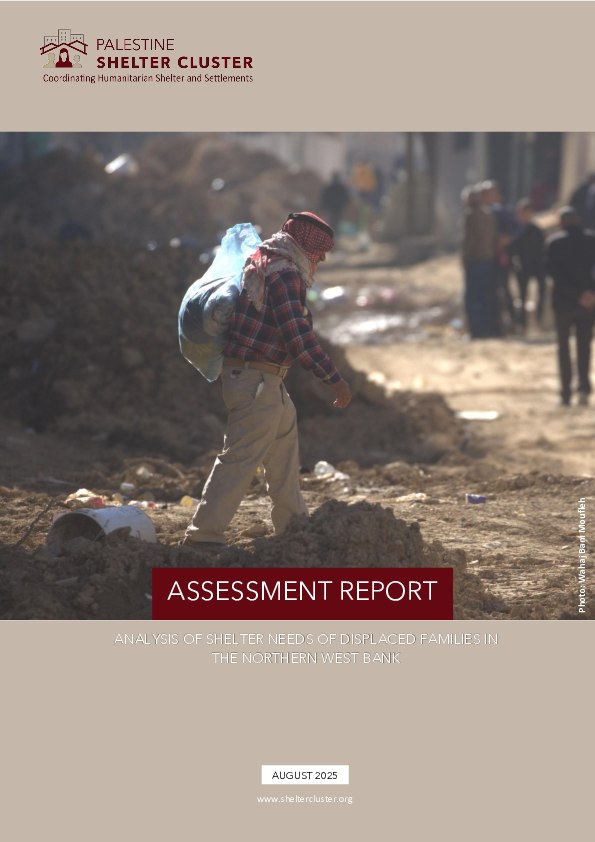Palestine
Assessment report - Analysis of shelter needs of displaced families in the northern West Bank
EXECUTIVE SUMMARY
IDP Household Assessment Northern West Bank Dashboard
Between May and June 2025, a large-scale household assessment was conducted in northern West Bank to examine the living conditions and shelter needs of internally displaced persons (IDPs) displaced by intense military operations in the camps earlier in the year. The assessment employed a clustered sampling methodology at the village level, resulting in a robust dataset of 2,960 household surveys.
A cluster sampling approach was adopted in order to reach a geographically dispersed population of IDPs displaced from camps in Tulkarem and Jenin. The sample ensures representativeness of this specific population as recorded in UNRWA’s tracking database - across the areas where they were located at the time of data collection. The sample was designed using a 95% confidence level and a ±5% margin of error, ensuring representativeness across a wide geographic distribution of IDP communities and resulted in surveys undertaken for 2,960 households.
The sampling frame targeted approximately 162 communities, among which 110 communities hosted 10 or fewer displaced households. The majority of the displaced population was found to be concentrated in urban centers and key villages, including Jenin (3,558 IDPs), Tulkarem (4,556 IDPs), Dhinnaba (3,419 IDPs), Iktaba (2,370 IDPs), Birqin (1,560 IDPs), and others such as Az Zababida, Bala, Khirbit A-Tayyah, and Anabta. The scale and distribution of the sample allowed the analysis to identify key trends and variations in shelter conditions across different locality types (urban vs. rural) and socioeconomic strata.

